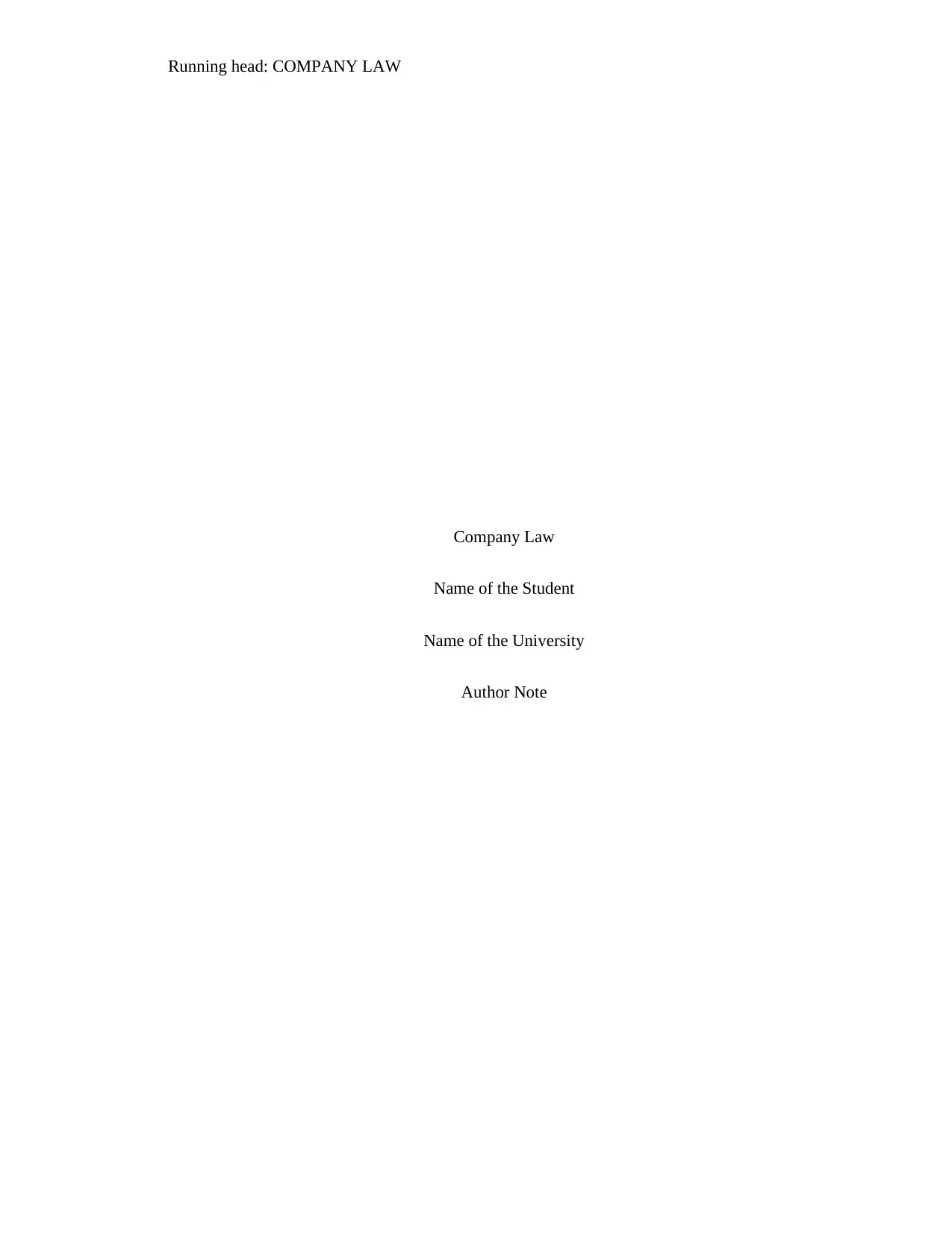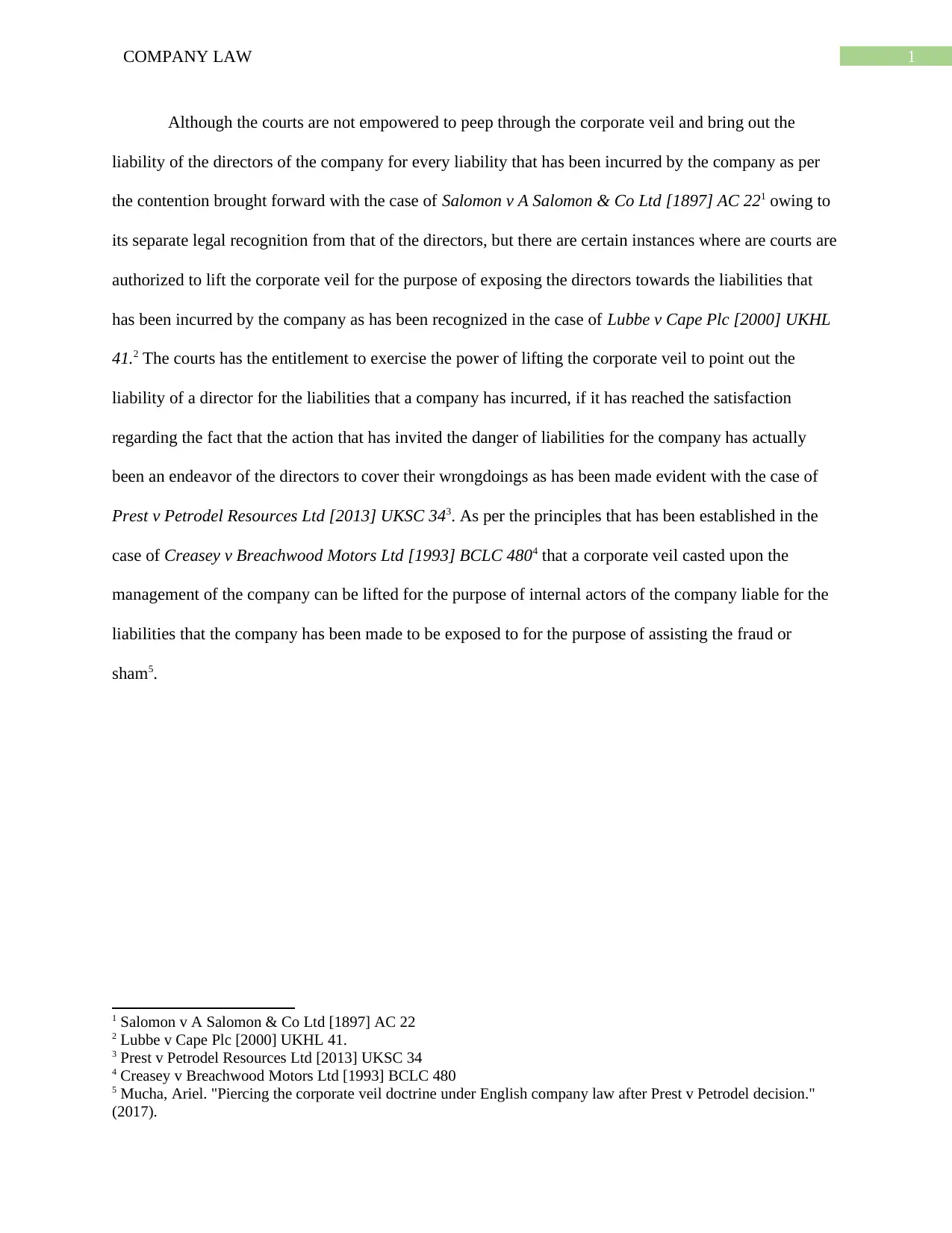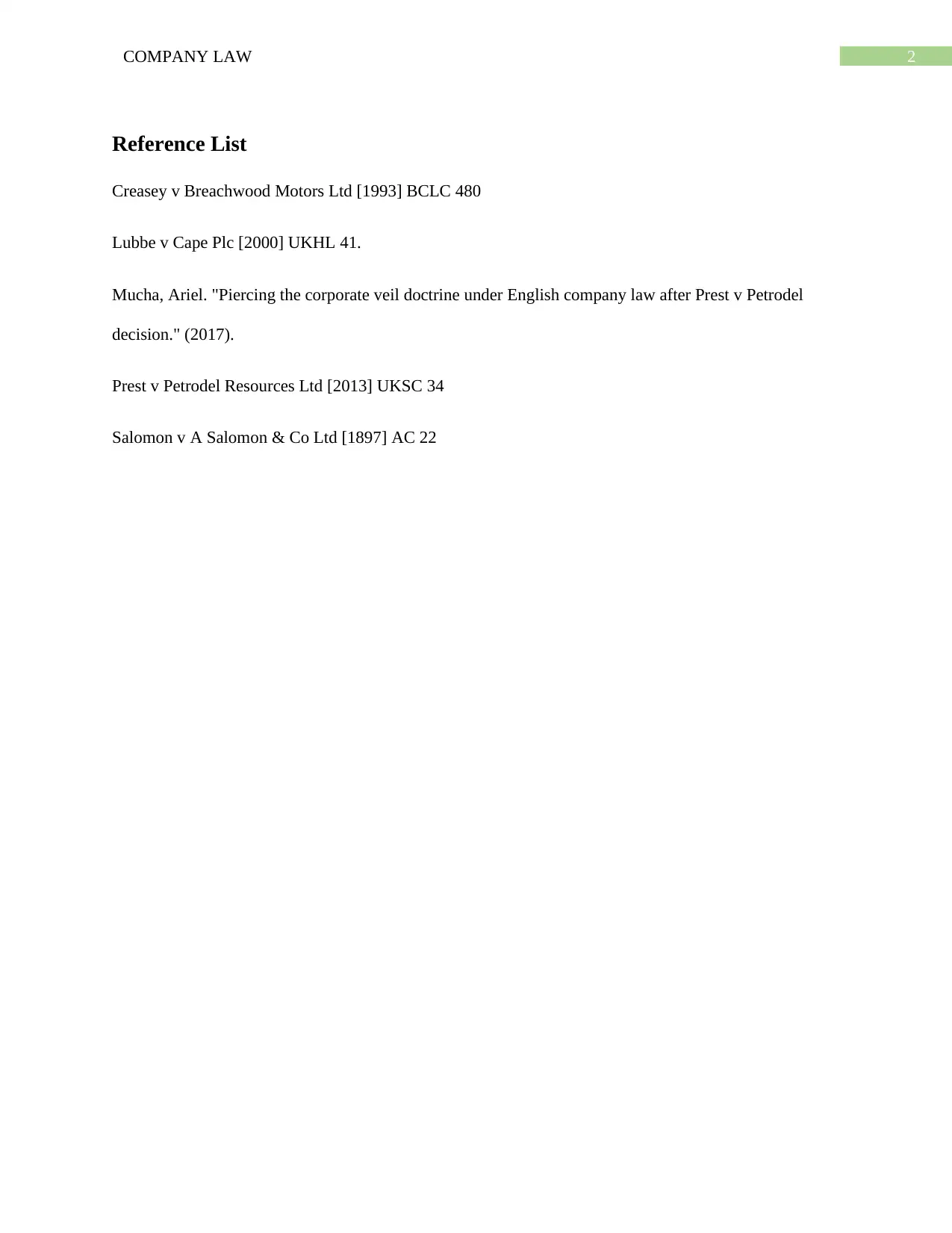Company Law: Lifting the Corporate Veil - Academic's Debate
VerifiedAdded on 2022/12/18
|3
|434
|84
Report
AI Summary
This report delves into the contentious issue of lifting the corporate veil in company law, focusing on the UK legal context. The analysis begins with the foundational case of Salomon v A Salomon & Co Ltd, which established the principle of separate legal personality. However, the report then examines instances where courts may disregard this principle, such as in cases of fraud or where the corporate structure is used to evade legal obligations, as exemplified by Lubbe v Cape Plc and Prest v Petrodel Resources Ltd. The report also considers the case of Creasey v Breachwood Motors Ltd, which highlights situations where the veil can be lifted to hold company directors liable. Furthermore, it explores the debate on the doctrine's absoluteness, considering the need for a balance between respecting the corporate structure and preventing its misuse. The report references academic sources to provide a comprehensive understanding of the topic.
1 out of 3










![[object Object]](/_next/static/media/star-bottom.7253800d.svg)